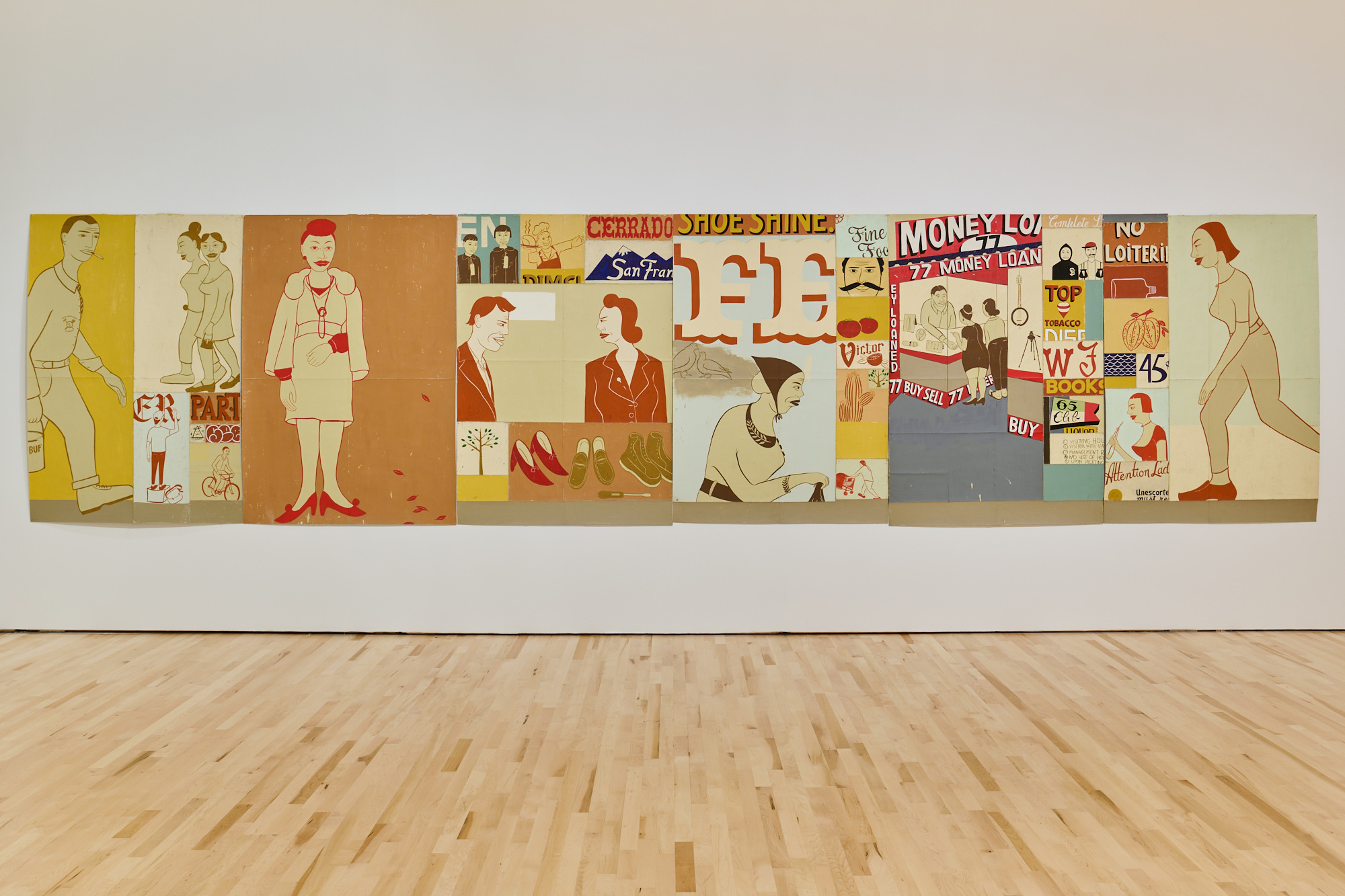Jobs
Day Jobs

On View
Cantor Arts Center At Stanford University
Day Jobs
March 6–July 21, 2024
Stanford, CA
The image of a struggling, bohemian artist dedicated solely to their craft is a romantic notion, especially when met with the harsh reality that many artists rely on day jobs to make ends meet. Though social class, sex, and race have often restricted who could be an artist throughout history, beginning in the nineteenth century (if not earlier), artists began to take on alternative careers to enable them to pursue their artistic passions: Frida Kahlo was trained as a medical illustrator before gaining recognition as an artist, Henri Rousseau worked much of his life as a toll collector in Paris, and Jackson Pollock was a custodian at the Guggenheim. This tradition of doing whatever it takes to be able to create is often glorified, but it stems from the less-glamorous impact of the high cost of living and modest government support for artists. Day Jobs at the Cantor Arts Center at Stanford University focuses on this aspect of artists’ lives, exploring how their day jobs can influence the visual art they create.
With over ninety works by thirty-six established and emerging American artists, the exhibition is set across two floors and divided into categories depending on the artist’s day job. These include artists who have worked in the art world, service industries, finance, and caregivers, among other professions.
The exhibition opens with art-world heavyweights Larry Bell and Sol LeWitt alongside Bay Area artists Sandy Rodriguez and Margaret Kilgallen, all of whom have worked in the arts. Bell got his start as a frame shop technician, his skills in framing can be seen in Untitled (1959), a piece of glass that has been cracked and set inside a wooden box frame. As the story goes, this crack, created accidentally on the job, inspired Bell to focus on glass work. This visual parallel can be seen in Bell’s iconic glass cube sculptures also on view. Nearby are watercolors by Sandy Rodriguez, who drew from her work experience at the Getty Museum’s education department. She merged her painting expertise (which she learned on the job) with her educational background to create three portraits of migrant children who died in US Customs and Border Protection custody. These pieces are steeped in Mexican history in both subject matter—the children as well as the vibrant quetzal birds—and material, created with cochinilla pigment on amate paper, materials native to Mexico.
The following galleries follow the same format—categorizing artists by their jobs—but in many instances, unlikely and surprising connections between the artists can be made. In one room, Barbara Kruger’s Untitled (Your fact is stranger than fiction) (1983) is set across from a large-scale ink print, Whatacup (2002/2014) by San Antonio artist Chuck Ramirez. Both artists worked as graphic designers, which can be seen in the ways they repurpose, isolate, and recontextualize contemporary advertising and graphics to create new meanings that suit their purposes. In the second-floor gallery, Jeffrey Gibson’s textile works interact with Genesis Belanger’s sculptural forms. Gibson, who worked as a visual merchandiser for IKEA, displays three of his ceremonial garments that combine textiles, colors, and attitudes to create a newfound identity for Native American peoples. This visual narrative resonates with former prop stylist Belanger’s sculpture Folly (2021), which theatrically presents fake foods on a fake picnic blanket, inviting viewers to reconsider the nature of consumption and representation in contemporary society.
But perhaps most illustrative of the ethos of the exhibition—that the work we do can be multifaceted: it can be back breakingly difficult, a means for a semblance of financial stability, and also serve as an outlet for artistic creativity—is the monumental work Legal Tender (2022), by Narsiso Martinez. Occupying an entire wall of the gallery, Legal Tender pays tribute to the millions of undocumented immigrant workers who, like himself, spend long days as agricultural workers, picking produce in the fields of Washington state. Created out of cardboard boxes that once held the produce he picked, a collage of various scenes come together to create a disjointed dollar bill. A female farmworker takes the place of a Founding Father at the center of the composition, and scenes of other workers, friends, and family are portrayed on either side. Not only is the work incredibly powerful in its depiction of the difficult labor and onerous conditions of the so-called “American farmworker,” but it speaks to the legality of those workers, who are often undocumented immigrants, and its size reinforces the notion that this is important, laborious work that is worth acknowledging.
Day Jobs offers a profound exploration of how artists balance their day jobs with their creative endeavors, highlighting the challenges and potential rewards of being an artist. Exiting the exhibition, I felt a newfound connection to these artists; while art and artists often seem elevated and separate from visitors in museums, this exhibition humanized their experiences, making their journeys feel more relatable and inspiring.







:max_bytes(150000):strip_icc()/roundup-writereditor-loved-deals-tout-f5de51f85de145b2b1eb99cdb7b6cb84.jpg)


